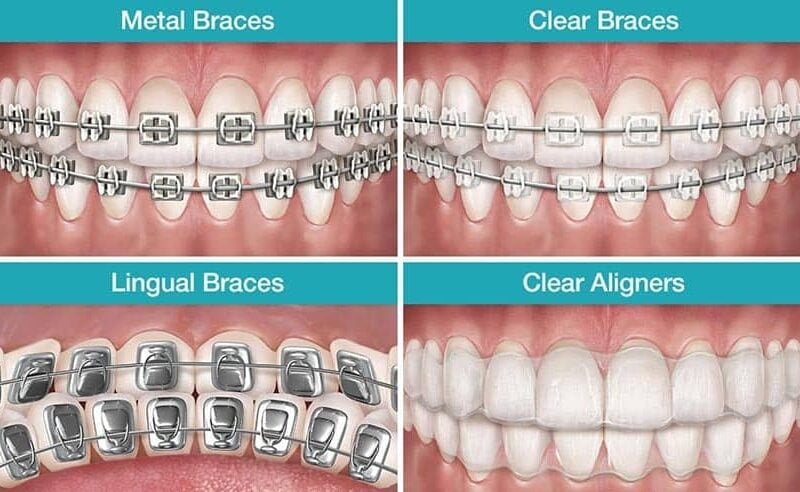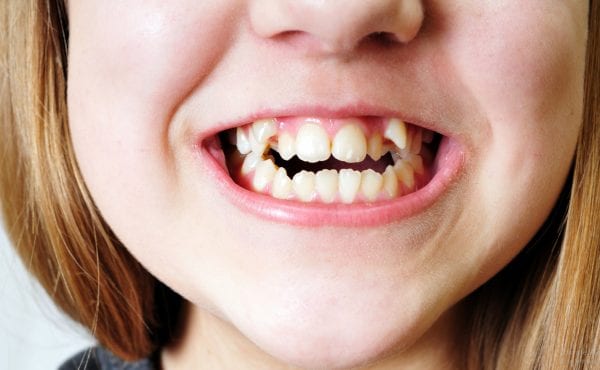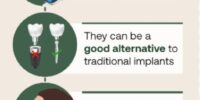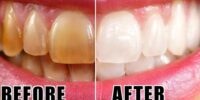What are Traditional Metal Braces

Traditional metal braces are a type of orthodontic treatment that have been used for decades to straighten teeth and correct bite issues. They consist of metal brackets and wires that are attached to the teeth, which gradually shift the teeth into the desired position over time.
The purpose of traditional metal braces is to improve the overall appearance and function of the teeth and bite, resulting in a healthier and more attractive smile. They are often used to correct issues such as overbite, underbite, crowding, and spacing of the teeth.
How traditional metal braces work
Traditional metal braces work by using a combination of brackets and wires to apply gentle pressure to the teeth, gradually shifting them into the desired position over time. The process begins with a consultation with an orthodontist, during which they will examine the patient’s teeth and bite, and discuss the treatment plan.
Placement
During the placement of the braces, the orthodontist will first clean the teeth, and then place the brackets, which are small metal squares, onto the teeth. These brackets are bonded to the teeth using a special dental adhesive. The orthodontist will then thread a thin metal wire through the brackets, which will apply gentle pressure to the teeth to begin moving them into the desired position.
Learn who is an orthodontist →
After the braces are placed, the patient will need to visit the orthodontist for regular adjustments. During these appointments, the orthodontist will tighten the wire, which will continue to apply pressure to the teeth, gradually shifting them into the desired position. Depending on the severity of the case and the desired outcome, treatment time can last from several months to a few years.
Removal
The treatment is completed by removing the braces, and the patient will need to wear a retainer to maintain the new position of the teeth.
Traditional metal braces are highly effective, and are considered the most common and traditional type of orthodontic treatment available. They are suitable for a wide range of patients and can correct a variety of dental issues.
Traditional metal braces
- Crowding of teeth: When there is not enough room in the jaw for all of the teeth to fit comfortably, traditional metal braces can be used to move the teeth into proper alignment.
- Spacing: Traditional metal braces can be used to close gaps between teeth, creating a more uniform and attractive smile.
- Overbite: A condition where the upper teeth bite over the lower teeth, traditional metal braces can be used to correct this and create a proper bite.
- Underbite: A condition where the lower teeth protrude beyond the upper teeth, traditional metal braces can be used to correct this and create a proper bite.
- Crossbite: A condition where the upper and lower teeth do not align properly, traditional metal braces can be used to correct this and create a proper bite.
- Open bite: A condition where the upper and lower teeth do not meet when the jaw is closed, traditional metal braces can be used to correct this and create a proper bite.
- Misaligned jaw: Traditional metal braces can be used to correct a misaligned jaw and create a proper bite.
- Impaction: Traditional metal braces can be used to move teeth into proper position when they are impacted, or unable to erupt properly.
- Protrusion: Traditional metal braces can be used to correct protrusion, or the forward positioning of the upper or lower teeth.
- Scissor bite: Traditional metal braces can be used to correct a scissor bite, which is a condition where the upper and lower teeth meet at an angle rather than a straight line.
Advantages of traditional metal braces
- High Effectiveness: Traditional metal braces have been used for decades and have been proven to be highly effective in straightening teeth and correcting bite issues. They can correct a wide range of dental issues, including overbite, underbite, crowding, and spacing of the teeth.
- Customizable: Traditional metal braces can be customized to fit each individual patient’s needs. The brackets and wires can be adjusted to apply the right amount of pressure to the teeth, which helps to ensure that the treatment is as effective as possible.
- Cost-Effective: Traditional metal braces are generally considered one of the most cost-effective orthodontic treatments available. They are often less expensive than other types of braces, such as ceramic or lingual braces.
- Durable: Traditional metal braces are made of metal, which makes them highly durable. They are able to withstand the daily wear and tear of eating, speaking and other activities.
- Low Maintenance: Traditional metal braces are relatively low maintenance. Patients will need to visit their orthodontist for regular adjustments, but other than that, they do not require a lot of upkeep.
- Widely Available: Traditional metal braces are widely available and can be found at most orthodontic clinics. They are also the most common type of orthodontic treatment, which means that patients will have no trouble finding an orthodontist who is experienced in providing this type of treatment.
Disadvantages of traditional metal braces
- Visibility: Traditional metal braces are highly visible and may be considered unsightly by some patients, especially adults.
- Comfort: Traditional metal braces can cause discomfort or pain in the mouth, especially during the initial adjustment period.
- Food Restrictions: Certain foods, such as sticky or hard foods, must be avoided while wearing traditional metal braces to prevent damage to the braces or tooth decay.
- Difficulty cleaning: Traditional metal braces can make it difficult to properly clean teeth and gums, increasing the risk of plaque buildup and tooth decay.
- Longevity: Traditional metal braces typically require a longer treatment time than other orthodontic options.
- Cost: Traditional metal braces can be costly and may not be covered by insurance.
- Maintenance: Regular adjustments and tightening of the braces are necessary, which can be time-consuming and may require multiple office visits.
- Risk of damage: Traditional metal braces can be prone to damage, such as broken brackets or wires, which may require additional office visits for repairs.
- Speech difficulty: Traditional metal braces can cause speech difficulty, especially during the initial adjustment period.
- Allergic reactions: Traditional metal braces can cause allergic reactions in some individuals due to the materials used.
Candidates for traditional metal braces
Traditional metal braces are typically recommended for individuals with moderate to severe misalignment or bite issues. They are most commonly used to correct issues such as:
- Crowded or crooked teeth
- Overbite, underbite, or crossbite
- Gapped teeth
- Protruding teeth
Additionally, traditional metal braces are often recommended for children and teenagers, as their jaws are still developing and the teeth are more likely to respond to treatment. However, they can also be used for adults, especially if the patient has had previous orthodontic treatment that has relapsed.
Key takeaways
- Traditional metal braces are a common and effective treatment option for correcting misalignment and bite issues.
- They work by applying gentle pressure to the teeth over time to gradually move them into the correct position.
- Advantages of traditional metal braces include high treatment success rate, the ability to correct a wide range of issues and suitability for both children and adults.
- Disadvantages include visibility, discomfort and the need for regular adjustment and maintenance visits.
- Potential candidates for traditional metal braces are those with moderate to severe misalignment or bite issues and who have no contraindications such as certain medical conditions or previous jaw surgery.
- It is important to consult with a qualified orthodontist to determine if traditional metal braces are the right treatment choice for individual needs.
Conclusion
In conclusion, traditional metal braces are a well-established and effective treatment option for correcting a wide range of misalignment and bite issues. They work by applying gentle pressure to the teeth over time, gradually moving them into the correct position. While traditional metal braces have many benefits, including a high treatment success rate, they also have some drawbacks, such as visibility and discomfort.
If you’re considering traditional metal braces as a treatment option for your misaligned teeth or bite issues, it’s important to consult with a qualified orthodontist. An orthodontist is a specialist in the diagnosis, prevention, and treatment of dental and facial irregularities and is trained to provide the best treatment plan for your individual needs.
They can provide you with a detailed examination, take x-rays, and make a diagnosis, as well as discuss all treatment options available to you. Don’t let misaligned teeth or bite issues hold you back from achieving the beautiful, healthy smile you deserve. Take the first step and schedule a consultation with an orthodontist today.









